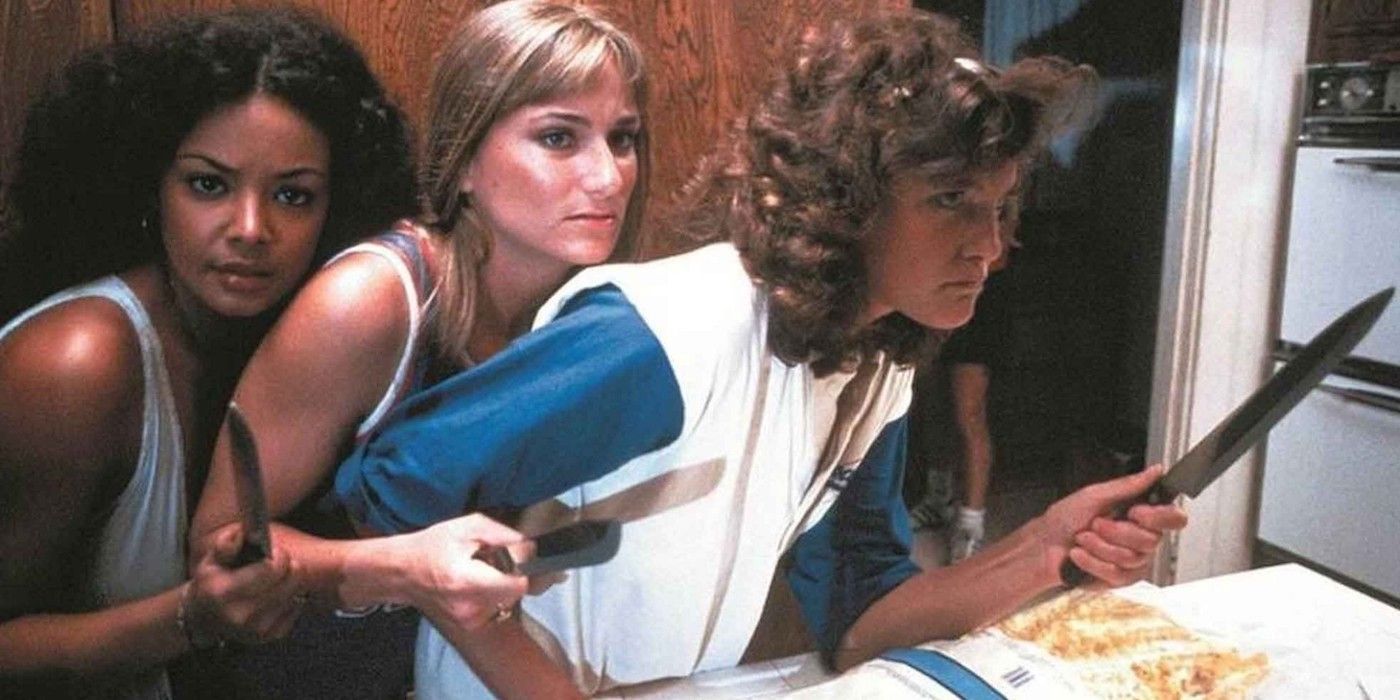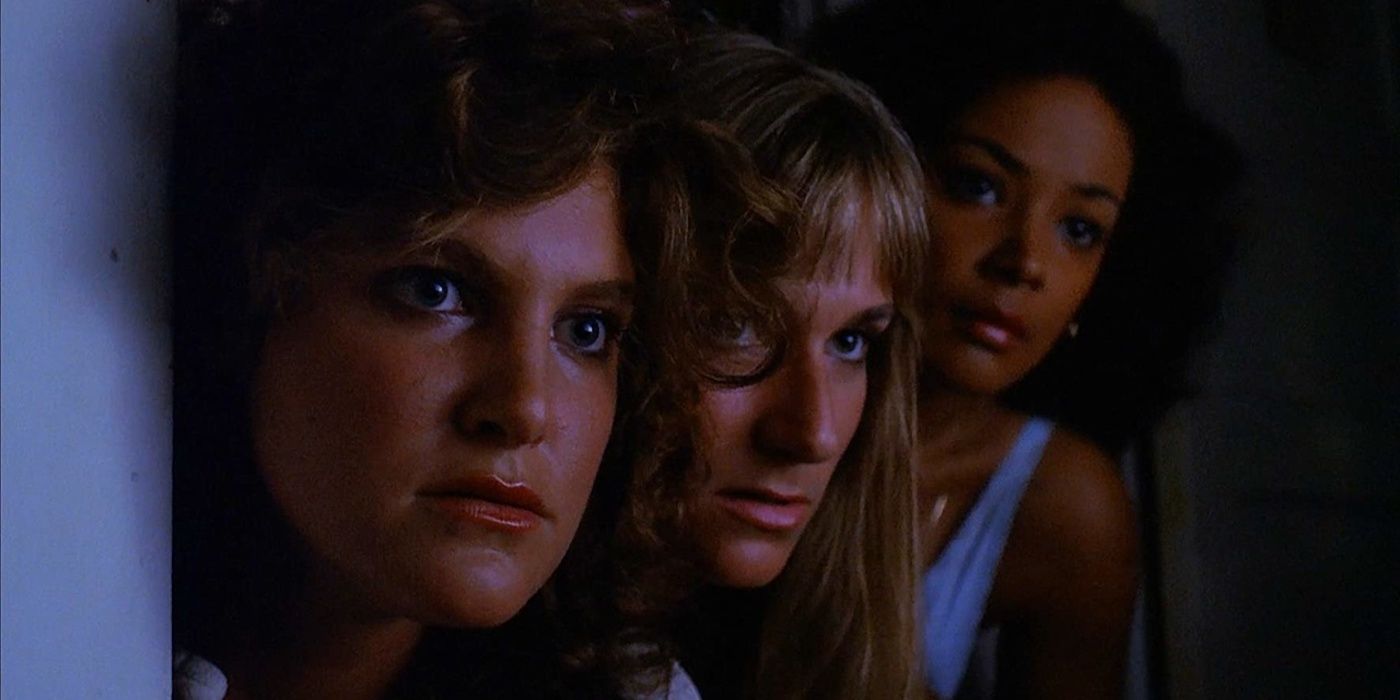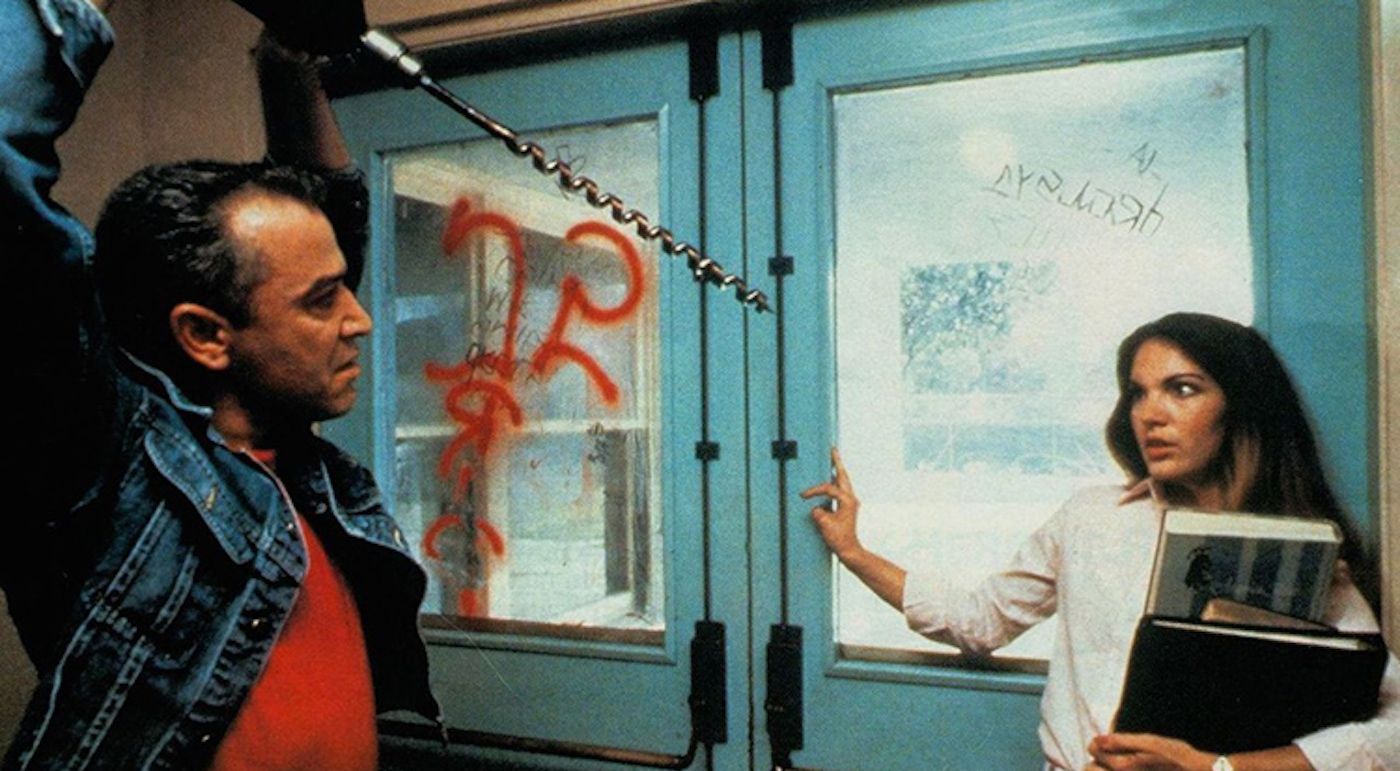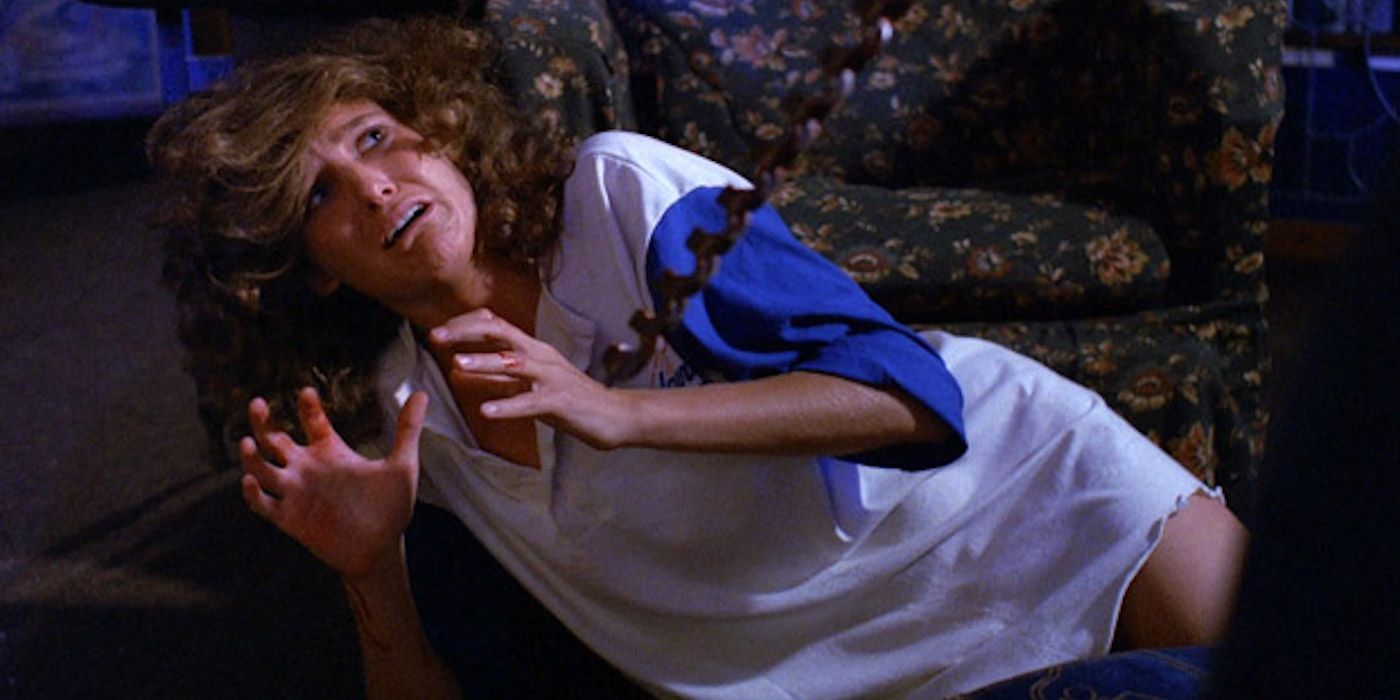Critics and audiences have long debated when the slasher genre actually began. Many early silent films have been regarded as influential, as well as sixties classics such as Psycho and Peeping Tom, but the genre was at its most popular in the mid-seventies and early eighties. At this time, movies like The Texas Chainsaw Massacre, Halloween, and Friday the 13th were landmarks in the slasher genre, and still have huge cult followings to this day. A large smattering of sequels often follow the successful originals, with many going on to last several decades. The Slumber Party Massacre is a slasher film from the genre’s golden years and it was a monumental addition to the genre in many ways. Like most slashers, it was panned by critics upon its release with many noting the tiredness of the genre even in its early days. Nevertheless, it was a huge success at the box office and went on to spawn two sequels and a remake. A reappraisal of the original film has seen it more highly praised with screenwriter Rita Mae Brown's intentional humor being particularly commended. Amy Holden Jones shot the movie as a more straightforward horror film, leading to a disparity in tone between writer and director - but it all worked out perfectly.
Slasher films have often been criticized for being sexist due to the stereotypical female victims that were established as a genre trope around the time The Slumber Party Massacre was released. Female characters are commonly victimized, and the ones who are the most frivolous are often the first to die. Even early instances of the classic final girl character trope often saw them eventually saved by a male character. The overwhelming number of male filmmakers behind these films was also an issue, resulting in problematic treatment of female characters. The deaths of the female characters were normally more brutal, and had a more intense focus on gore and torture.
The Slumber Party Massacre did not fall into a lot of these criticisms. It has since become renowned for the way it changes the treatment of genders. There are few male characters in the movie but their deaths see them particularly brutalized and most of the violence against the female characters is either obscured or off-screen. Other typical gender roles are noticeably switched in the movie; the first victim is a female electrician, and the girls have interests that are usually only seen in male movie characters like sports. While nudity is prominent in the film, this was reportedly down to the requests of executive producer Roger Corman, and the actresses and Jones were left frustrated by this. Corman saw this as a way to appeal to male audiences. He has done this throughout his long career in the film industry, and this is not the only example of him frustrating directors by his insistence on adding nudity and sex scenes. He clashed with director Barbara Peeters on the 1980 sci-fi horror Humanoids of the Deep for this reason, and he eventually had to hire another director to shoot these scenes. Peeters did not even want to be credited on the final film due to Corman's actions.
Even The Slumber Party Massacre’s iconic poster challenges gender ideas with the male killer’s legs spread to frame the girls in the middle. This positioning has been shown on many posters across a wide variety of genres, but it is most commonly a group of men in between a woman’s legs. Despite being unique in some ways, the movie’s plot is very typical of the slasher genre. Simply, a deranged killer escapes from prison and targets a group of teenage girls at a slumber party. However, the female leads are not helpless victims whose sole purposes are just to be killed off and their resilience and ultimate support of one another sees them triumph over the mass murderer.
Brown wrote the script as a parody of slasher movies, but Jones did not shoot the movie this way and her direction treats it as if it were a straightforward horror movie. The original title of Brown's script was Sleepless Nights, which specifically mocked the genre, but the producers wanted to make a more serious movie while still keeping much of the dialogue from her script. As a result, the majority of events take place in the dark and Jones never shies away from drenching the screen in blood. In between a lot of the violent kills, there is a lot of downtime where the dialogue is very satirical. This would ordinarily cause a maddening tonal inconsistency, however, the parodic qualities put a playful, immersive style in place. Wes Craven’s Scream is often regarded as a monumental landmark in the so-called meta-horror genre, and while there is no evidence to suggest The Slumber Party Massacre influenced it in any way, there are obvious similarities between the two.
From a modern perspective, what makes The Slumber Party Massacre such a fun watch is how hilarious it is. The sense of humor is apparent from the start – the first sound heard in the movie is a humorous exchange between a radio host and a caller which is dismissed almost immediately. The biggest laughs come from many ludicrous lines being delivered in a serious manner. One of the funniest side characters is an insignificant pizza delivery man who becomes one of the killer’s victims. After the girls discover his body, Kim (Debra De Liso) states he is dead and cold before Jackie (Andree Honore) asks “Is the pizza?” and the pair of them proceed to eat pizza off his corpse. The hilarity goes further when Jackie says she feels better already for eating something.
Another comedic highlight is when the killer is loading several bodies into a trunk and becomes frustrated when he runs out of room. The Slumber Party Massacre’s killer differs in many ways from typical slasher villains. Slasher icons such as Ghostface, Jason Voorhees, and Michael Myers all wear masks to conceal their identity whereas Russ Thorn (Michael Villella) does not hide behind a mask. There is hardly any effort to conceal his identity. He is not a particularly large or imposing figure either which makes him less intimidating than an average slasher villain, but he is no less brutal. With a drill being his weapon of choice, he is often covered in the blood of his victims which is when he most fits the mold of a slasher villain’s appearance.
The contrasting wishes of writer, producers, and director would ordinarily cause the movie to be a disaster, but in this case, it only serves to ramp the entertainment value up much higher. Brown wanted to satirize slashers, producers wanted to make a profitable movie, and Jones wanted to showcase her directing skills to kickstart her career - in a way, everyone got what they wanted. The way the movie offered a new perspective on slasher movies full of hilarity and horror makes it one of the most overlooked slashers of the eighties. Its unfortunate sandwiching between huge slasher successes has seen its brilliance overlooked. It still managed to spawn a franchise though, and it remains the only horror franchise to be made entirely by female directors. The charm of the original could hardly be matched though, and the discordance amongst the crew miraculously makes The Slumber Party Massacre one of the most entertaining slasher movies ever made – even if much of it is accidental.




